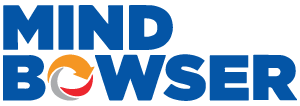Most telemedicine solutions fail when treated as standalone video apps. The real value lies in integration with EHRs, RPM, and clinical workflows. Hospitals need to consider solution types such as synchronous, asynchronous, RPM, and hybrid models to fit specialties and populations. Compliance, licensure, and reimbursement are non-negotiable for scalability. ROI is measured in readmission reduction, clinician efficiency, and patient engagement. Future-ready telemedicine will leverage AI, AR/VR, and predictive analytics to enhance patient care. Mindbowser builds custom, compliant telemedicine solutions tailored to hospital ecosystems.
Telemedicine is no longer just about video calls or virtual consultations. As healthcare evolves, so too must the systems that support it. True telemedicine solutions go beyond the basic video chat and integrate deeply with existing hospital infrastructure, including EHR systems, Remote Patient Monitoring (RPM) devices, and the full spectrum of clinical workflows.
Despite the growing adoption of telemedicine, many platforms fail to deliver on their promises. This is largely because these solutions don’t fully integrate with the existing healthcare ecosystem, creating silos of data and fragmented care. As a result, clinicians struggle to adopt these tools, and patients often experience inconsistent care.
In this blog, we will explore how telemedicine solutions can work effectively within your healthcare system. We will look at integrating telemedicine with EHR systems, leveraging RPM to improve care, and optimizing clinical workflows.
Finally, we’ll discuss how Mindbowser can help your organization adopt custom, compliant, and scalable telemedicine solutions that truly work for both providers and patients.
The promise of telemedicine is clear: improving patient access, reducing costs, and enhancing healthcare delivery. Yet, many telemedicine platforms fail to meet these expectations. The reasons often lie in poor integration and a lack of scalability, which can create significant barriers to adoption and success. Here’s why most telemedicine solutions fall short:
One of the biggest challenges is the lack of integration with existing EHRs. Many telemedicine solutions are built as standalone tools that focus solely on virtual visits without considering how they fit into a hospital’s larger clinical infrastructure. This approach forces clinicians to work across multiple platforms rather than leveraging the central EHR system they are already familiar with.
When telemedicine is disconnected from EHRs, patient data silos emerge. Doctors must enter patient data manually, increasing the risk of errors and duplications. This additional workload frustrates clinicians and ultimately leads to poor adoption. Telemedicine solutions must seamlessly integrate with EHR systems such as Epic, Cerner, or MEDITECH to enable clinicians to view all relevant information in one place, streamline workflows, and ensure better patient care.
Another common failure of telemedicine platforms is focusing solely on video calls without offering the full range of functionalities needed for comprehensive care. While video consultations are important, they are just one piece of the puzzle. Healthcare is more than just virtual visits. It also includes remote patient monitoring (RPM), asynchronous data exchange, medical imaging, and more.
A video-only platform cannot handle the nuances of chronic disease management, post-acute care, or multi-specialty virtual care. For example, a diabetic patient may need more than a video call with a doctor. They might require continuous monitoring of blood sugar levels, alerts for abnormalities, and automatic reporting of vital data to their care team. Without these functions, a telemedicine solution is limited and unable to provide comprehensive, long-term care.
Successful telemedicine solutions need to offer multi-modal care, synchronous (real-time video), asynchronous (store-and-forward for images or reports), and RPM. This ensures that the platform can address a wide range of medical conditions and care models, not just routine consultations.
When telemedicine systems operate in isolation, they create data silos that prevent interoperability across different healthcare systems. Clinicians end up duplicating efforts, entering the same data into multiple systems, and spending unnecessary time navigating between platforms. This leads to clinician burnout and a wasted administrative load that could be used to improve patient care.
For instance, without proper integration, telemedicine visit records might not be accessible directly from a patient’s EHR. As a result, clinicians must manually transfer data between systems, increasing the chances of missed details or inconsistent care. Over time, this not only creates frustration but also undermines the quality of care patients receive.
Telemedicine solutions need to be interoperable and capable of seamless data transfer. They should work in tandem with existing healthcare IT systems, allowing clinicians to focus on patient care rather than administrative tasks.
Telemedicine is not a one-size-fits-all solution. As healthcare needs evolve, so do the types of telemedicine platforms available. To truly optimize care, it is essential to understand the different types of telemedicine solutions and how they serve specific needs. The right solution depends on the healthcare setting, patient population, and the specific requirements of care.
Here are the key types of telemedicine solutions that are currently shaping the healthcare landscape:
The most well-known form of telemedicine is synchronous care, in which the healthcare provider and patient interact in real time via video consultations. This is the virtual equivalent of an in-person appointment, where both the doctor and the patient are present at the same time to discuss symptoms, treatment options, or follow-up care.
Synchronous telemedicine is typically used for general consultations, follow-up visits, and non-urgent care. It has been widely adopted in primary care, mental health, and urgent care settings. For example, patients with routine issues such as a cold or flu, or a follow-up appointment after surgery, can use video calls to meet with their healthcare provider without leaving home.
Despite its benefits, synchronous care is limited by factors like bandwidth, patient access to technology, and the inability to fully replace physical examinations. For conditions that require in-depth physical assessments or diagnostics, synchronous video consultations might not be sufficient on their own.
Key Benefits:
Challenges:
Asynchronous telemedicine, also known as store-and-forward, allows patients and providers to communicate without both being present at the same time. This method involves the transmission of patient data (such as images, test results, medical records, etc.) to a healthcare provider for review at a later time. The provider can then respond with their diagnosis or treatment plan.
This type of telemedicine is particularly valuable in specialty care areas such as dermatology, radiology, and pathology, where medical images or test results can be sent and reviewed at the provider’s convenience. For instance, a dermatologist might review a patient’s skin images and provide recommendations or treatment without scheduling a live video consultation.
Store-and-forward systems are beneficial for non-urgent conditions and are often used when patients need consultations for things like skin rashes, eye issues, or minor injuries. This type of care is more flexible, enabling providers to offer expert insights without scheduling a real-time consultation.
Key Benefits:
Challenges:
Remote Patient Monitoring (RPM) is a powerful telemedicine solution that collects patient health data in real time, outside the clinical setting, and transmits it to healthcare providers for analysis. RPM typically includes wearable devices that monitor vital signs such as blood pressure, glucose levels, heart rate, and other key metrics.
RPM is particularly useful for managing chronic diseases like diabetes, hypertension, heart failure, and COPD, where ongoing monitoring is crucial to prevent complications and hospital readmissions. Patients can wear a glucose monitor or a blood pressure cuff at home, with the data automatically sent to their healthcare provider for review.
By integrating RPM into the telemedicine solution, patients can receive continuous care without requiring frequent office visits. Providers can track changes in vital signs over time and intervene early when a patient’s health begins to decline, reducing the risk of hospitalization.
Key Benefits:
Challenges:
The future of telemedicine is increasingly leaning toward hybrid models that blend different types of telemedicine solutions to provide more comprehensive, patient-centric care. These models combine synchronous video consultations, asynchronous data exchange, and remote patient monitoring to deliver a holistic care experience.
For example, a patient with hypertension may use RPM devices to monitor their blood pressure and send data to their healthcare provider. If the data indicates an issue, the provider can schedule a synchronous video consultation to discuss treatment options. Alternatively, if a skin condition needs to be assessed, the provider can review the images asynchronously and send the treatment recommendations.
This hybrid approach is ideal for multi-specialty care and helps create a seamless care continuum, where patients receive the right care, at the right time, through the most efficient channel.
Key Benefits:
Challenges:
Integrate EHR, RPM, and clinical workflows into one seamless system that boosts clinician efficiency, compliance, and patient engagement.
The success of telemedicine largely depends on its ability to integrate seamlessly into the existing EHR (Electronic Health Record) systems. A telemedicine platform that operates in isolation can create data silos, leading to inefficiencies and errors. To truly enhance the quality of care, patient safety, and provider productivity, telemedicine solutions need to be embedded directly into the hospital’s EHR system, ensuring that all patient information is accessible in one place and flows smoothly across departments and specialties.
Integration begins with understanding the technical standards governing the exchange of healthcare data. Some of the key standards that make EHR integration possible include:
1. HL7 (Health Level 7): HL7 is a set of international standards for the exchange of healthcare information. While HL7 v2.x has been the foundation of healthcare interoperability for decades, newer standards like HL7 FHIR have gained traction for their flexibility and real-time capabilities.
2. FHIR (Fast Healthcare Interoperability Resources): FHIR is an open-source standard developed by HL7 for the interoperable exchange of health information. It facilitates the exchange of structured data (such as medical histories, treatment plans, and lab results) across various healthcare systems, including telemedicine platforms. FHIR is designed to be scalable, easy to implement, and mobile-friendly, making it ideal for modern telemedicine solutions.
3. SMART on FHIR: An extension of FHIR that enables third-party applications to interoperate with EHR systems in a secure, standardized manner. By using SMART on FHIR, telemedicine solutions can be integrated with EHRs without overhauling the entire healthcare IT infrastructure. SMART provides secure authentication and authorization methods to ensure that only authorized personnel can access sensitive patient data.
Understanding these standards is crucial when planning a telemedicine platform that fits within the existing EHR framework. It enables seamless data exchange and ensures that telemedicine solutions remain compliant with industry regulations.
Once the technical standards are in place, the next step in integration is ensuring that the right data is shared between the telemedicine platform and the EHR. Patient information, such as lab results, clinical notes, medications, and imaging, needs to be synchronized and accessible to both the telemedicine provider and the in-person care team.
1. Labs and Diagnostics:
When a telemedicine solution integrates with the EHR, diagnostic results, such as blood tests, imaging, and other reports, can be shared directly with the telemedicine provider. For example, a dermatologist reviewing a patient’s skin rash can access lab results, test reports, or pathology images in real time without needing to request them manually.
2. Clinical Notes:
Telemedicine providers should be able to write clinical notes directly into the EHR during or after the consultation. These notes should be incorporated into the patient’s permanent medical record, ensuring continuity of care. For example, suppose a patient consults a telehealth physician for an urgent care issue. In that case, the consultation notes should be available to the patient’s primary care doctor or specialist for future reference.
Related read: How to Improve Efficiency When Writing Clinical Notes in EHR
1. Medications and Prescriptions:
Telemedicine solutions must be integrated with prescription management systems to ensure that prescriptions for medications, therapies, or refills are accurately entered into the EHR and communicated to pharmacies. For instance, if a telemedicine provider prescribes an antibiotic, it should be automatically added to the patient’s medication list in the EHR, allowing the prescribing provider and the pharmacy to easily track the treatment.
2. Imaging and Medical Records:
Telemedicine platforms used for specialties such as radiology or dermatology must support the transfer of high-resolution images, scans, and other records. These images should be stored and accessed directly within the patient’s medical record. The integration ensures that a patient’s clinical history is complete and consistent, whether care was delivered in person or virtually.
The seamless flow of patient data from EHR to telemedicine platform and back is crucial for efficient care delivery. Without this integration, healthcare providers risk seeing incomplete patient records, potentially leading to errors and suboptimal care.
To fully illustrate how EHR integration works, let’s consider two of the most widely used EHR systems in healthcare: Epic and Cerner.
1. Epic Integration:
Epic provides a robust API platform that allows third-party applications, including telemedicine solutions, to integrate with its EHR system. Telemedicine platforms like Mindbowser’s custom solutions can use Epic’s APIs to embed telemedicine visit notes, consultation summaries, and prescriptions directly into the patient’s Epic chart. This ensures that all healthcare providers accessing the patient’s records can see a comprehensive view of care, whether the visit was virtual or in-person.
Similar to Epic, Cerner offers an open API environment that enables integration with external applications, including telemedicine platforms. Telemedicine visit notes, patient interactions, and clinical documents can be added directly into Cerner’s Health Record (CHR). For example, suppose a telemedicine psychiatrist evaluates a patient for mental health concerns. In that case, the assessment notes are automatically added to the Cerner CHR, where both the psychiatrist and the patient’s primary care physician can access them.
By embedding telemedicine visit notes directly into Epic or Cerner, the patient’s entire care journey is accessible in a single unified record, ensuring continuity of care across both virtual and in-person visits. This integration minimizes the risk of data fragmentation, improves clinical decision-making, and boosts provider efficiency.
Remote Patient Monitoring (RPM) is one of the most transformative technologies in telemedicine. Unlike traditional telemedicine, where patients and healthcare providers interact during a virtual consultation, RPM enables continuous, real-time monitoring of patients’ health status. It involves using devices and wearables that collect vital health data and transmit it to healthcare providers for analysis, enabling proactive care without in-person visits.
RPM is designed to offer continuous engagement between patients and their healthcare providers, even when the patient is at home. With the help of wearable devices or sensors, RPM tracks vital signs like blood pressure, heart rate, blood glucose levels, and oxygen saturation on a daily or even hourly basis.
For example, patients with hypertension can use a blood pressure monitor that automatically transmits readings to their healthcare provider. The healthcare provider can then analyze the data, track trends, and make necessary adjustments to the patient’s treatment plan. In the case of chronic conditions such as diabetes, RPM devices, such as continuous glucose monitors (CGMs), allow healthcare providers to remotely track blood sugar levels over time, providing a more comprehensive view of the patient’s condition.
The key to effective RPM is continuous data collection and real-time feedback. Providers receive timely alerts whenever a patient’s health data deviates from normal ranges, enabling them to take immediate action to prevent complications. For instance, if a diabetic patient’s glucose level is too high, the provider can contact the patient and adjust their medication before the condition worsens, potentially preventing a hospitalization.
This type of continuous monitoring allows for a shift from reactive to proactive care, where healthcare providers don’t just wait for patients to show up in the emergency room. Instead, they can catch potential health problems early and intervene before they become critical.
While RPM’s core function is to monitor patient vitals, its real value lies in integrating these readings directly into a clinician’s workflow. To achieve this, the RPM data needs to sync seamlessly with the healthcare provider’s EHR or the telemedicine platform they’re using. This integration ensures that healthcare providers don’t need to manually input data or check multiple systems to monitor patient progress.
For example, a heart failure patient using an RPM device to monitor their weight, blood pressure, and heart rate will have their data automatically transmitted into the EHR system. The doctor can then access this data via their usual workflow, analyzing trends and patterns alongside other medical information such as lab results, medications, and past clinical notes.
By integrating this real-time health data directly into the clinician’s workflow, RPM eliminates the manual tracking and data entry errors that can lead to mistakes. Moreover, it ensures the clinician can act quickly when a patient’s vitals fall outside acceptable limits.
The key to success in RPM integration is ensuring that the device and platform are interoperable with existing healthcare systems. Without smooth integration, healthcare providers could face the frustrating challenge of checking multiple systems to get a complete picture of a patient’s health. Therefore, telemedicine platforms that successfully integrate RPM data into their EHR systems or clinical dashboards offer significant efficiency improvements for clinicians.
The success of any telemedicine solution is not just about the technology; it’s about how it fits into healthcare providers’ clinical workflows and how easily staff can adopt it. Telemedicine solutions must seamlessly integrate into the daily routines of clinicians, nurses, and adm??inistrative staff. Without proper adoption and workflow integration, even the best telemedicine platform can fail to deliver the promised benefits.
When it comes to clinical workflows, telemedicine isn’t just about scheduling a video call. It must also handle the entire patient journey, from initial scheduling and intake through to post-visit follow-up and ongoing care.
For example, telemedicine scheduling systems must be able to sync with existing EHRs and the hospital’s appointment systems to ensure that patients are booked for virtual visits without creating conflicts with in-person appointments. The intake process should be just as seamless, with patients filling out forms online and those responses being integrated directly into their medical records. This reduces administrative workload and ensures that clinicians have all the necessary information before the virtual visit begins.
Telemedicine solutions that don’t integrate scheduling and intake into their workflow can create bottlenecks in the process. For instance, if a patient’s visit isn’t properly scheduled or their medical history isn’t available, the telemedicine consultation may be delayed or rescheduled.
A seamless intake and scheduling flow is key to ensuring telemedicine is as effective as in-person care. It also ensures that administrative tasks do not bog down clinicians, allowing them to focus on delivering quality care.
Every specialty in healthcare has its own unique workflow needs. A one-size-fits-all telemedicine solution may work for some specialties but fail for others. For example, tele-ICU (intensive care unit) workflows involve continuous monitoring of critical patients, often using real-time video and data feeds from vital signs and medical devices. Telemedicine solutions for tele-ICUs must integrate with ICU-specific systems and provide real-time alerts when a patient’s condition worsens.
On the other hand, behavioral health consultations focus more on patient interaction and mental health assessments. Telemedicine platforms designed for this specialty must ensure confidentiality and privacy, and capture emotional cues effectively, even during video calls. The platform needs to allow secure document sharing, treatment planning, and progress tracking, all of which are part of the ongoing mental health care journey.
In pediatrics, the workflow may need to cater to both parents and children. A pediatric telemedicine solution must ensure that children’s medical history, growth charts, and vaccination records are easily accessible during the virtual visit. Additionally, parents may need support in managing their child’s health, from scheduling follow-up visits to receiving educational materials on conditions such as asthma or diabetes.
Telemedicine platforms that tailor workflows to specific specialties ensure they are truly optimized for each department’s unique needs. This specialized approach leads to better care delivery, easier staff adoption, and higher patient satisfaction.
Adoption of telemedicine by clinical staff doesn’t happen automatically. Clinicians and nurses need adequate training not only in using the telemedicine platform but also in integrating virtual visits into their daily workflows. This is especially true when switching from an in-person care model to one that blends in-person and virtual visits.
Training should focus on:
In addition to clinicians, nurses, and support staff need to be trained to assist patients in preparing for virtual visits, handle patient inquiries about technology, and ensure that patient data is correctly entered and updated in the EHR.
When clinicians are properly trained and comfortable with the technology, they can deliver more effective care, reduce the likelihood of technical issues during consultations, and ultimately improve patient satisfaction. Well-trained staff are also less likely to experience frustration with the system, leading to higher adoption rates and increased engagement with telemedicine solutions.
When implementing telemedicine solutions, one of the most important questions to answer is: What return on investment (ROI) can we expect? While telemedicine offers clear benefits in terms of patient access and convenience, its true value lies in its ability to drive cost savings, improve clinical outcomes, and enhance operational efficiency.
Healthcare organizations need to measure and track the impact of telemedicine not just in terms of patient visits but also in how it optimizes processes, reduces hospital readmissions, and increases provider productivity. Here’s a breakdown of the key areas where telemedicine can drive ROI:
One of the primary ways telemedicine solutions drive ROI is by reducing duplication of efforts and improving clinician productivity. Without telemedicine, clinicians spend significant time managing administrative tasks, including scheduling, patient intake, and data entry.
By integrating telemedicine directly into the EHR system and automating processes, healthcare organizations can reduce the administrative burden on clinicians. For example, with a well-integrated telemedicine solution, patient data (such as medical history, lab results, and previous consultations) is automatically synced into the clinician’s workflow, meaning they don’t have to waste time entering or searching for information.
Furthermore, virtual consultations allow clinicians to see more patients in less time, improving the efficient use of available time. Providers can conduct follow-up visits or consultations for less complex conditions without an office visit, enabling them to treat more patients and spend less time traveling or waiting between appointments.
Key Benefits:
Telemedicine solutions, particularly those integrated with Remote Patient Monitoring (RPM), play a key role in reducing hospital readmissions. For patients with chronic conditions such as heart disease, diabetes, or COPD, consistent monitoring is crucial to prevent complications and hospitalizations.
By using telemedicine platforms to continuously monitor vital signs and other health metrics, healthcare providers can identify early warning signs of deteriorating health before hospitalization is required. For instance, a patient with heart failure using a blood pressure monitor or a scale to track fluid retention can have their readings automatically transmitted to their doctor. Suppose the data shows troubling trends, such as elevated blood pressure or weight gain due to fluid retention. In that case, the provider can intervene early by adjusting medications or scheduling a virtual consultation, preventing a potential emergency room visit or hospital readmission.
Not only does this help in improving patient health outcomes, but it also reduces the financial burden of preventable readmissions. Hospitals can save on the high costs of inpatient care while patients benefit from more effective chronic disease management.
Key Benefits:
Telemedicine also contributes to long-term operational savings. Once a telemedicine solution is integrated into a hospital’s existing workflows, it can streamline billing processes and reduce the number of IT support tickets.
For example, when telemedicine systems are integrated with the EHR, patient information from virtual consultations can be automatically captured, coded, and sent for billing without manual entry. This eliminates the chances of billing errors and ensures that insurance claims are processed more quickly. It also reduces the burden on billing departments, which would otherwise have to track telemedicine encounters and input data manually.
Moreover, well-integrated telemedicine systems with EHRs and RPM devices can reduce the technical complexity of managing multiple software solutions. As a result, IT support tickets related to telemedicine technical issues can be reduced, leading to less downtime and fewer resources needed to fix problems.
Key Benefits:
ROI isn’t just about cost savings; it’s also about improving the patient experience. Telemedicine solutions offer significant convenience for patients, who no longer have to travel long distances for consultations or wait for extended periods in doctors’ offices.
By offering virtual care, healthcare organizations can provide patients with greater flexibility in managing their appointments, leading to higher patient satisfaction. This increased satisfaction often translates to greater patient retention and can even attract new patients who prefer the convenience of virtual visits.
For example, pediatric telemedicine platforms allow parents to schedule consultations without taking time off work or bringing their child into the office, thereby improving the overall patient experience. Similarly, tele-mental health services offer greater accessibility for patients seeking therapy or counseling, especially for those living in underserved or remote areas.
Key Benefits:
In summary, telemedicine solutions offer a variety of ways to drive ROI across a healthcare organization. By reducing duplication, improving clinician productivity, and lowering readmissions, hospitals can save both time and money. Additionally, integrating telemedicine with EHRs and RPM systems improves long-term operational efficiency, while enhanced patient satisfaction and retention provide lasting financial benefits.
As hospitals continue to adopt telemedicine, tracking these metrics will be essential to measure its full impact on financial performance and care quality.
Compliance with regulations is a crucial aspect of any telemedicine solution. Healthcare is one of the most highly regulated industries, and telemedicine is no exception. To ensure that telemedicine solutions can be safely and effectively used across different regions and settings, they must comply with various federal, state, and international standards. This includes adhering to privacy and security requirements, maintaining licensure, and ensuring reimbursement for telemedicine services.
Here’s a breakdown of the critical compliance and regulatory factors that telemedicine solutions must address to function in today’s healthcare landscape.
1. HIPAA (Health Insurance Portability and Accountability Act):
The HIPAA Privacy Rule and Security Rule are critical for telemedicine solutions operating in the United States. These regulations govern the privacy and security of protected health information (PHI). Telemedicine platforms must ensure that patient data is stored securely, that electronic communications are encrypted, and that access to sensitive data is strictly controlled.
The HIPAA Security Rule specifically mandates that telemedicine platforms implement safeguards, including data encryption, secure communication channels, and appropriate access controls, to protect patient information. Failure to comply with HIPAA can result in severe fines and damage to a healthcare provider’s reputation.
Telemedicine solutions that fail to meet HIPAA compliance are not only vulnerable to data breaches but also at risk of legal action. Healthcare providers must ensure that the telemedicine platform they adopt is equipped with the necessary security features, such as end-to-end encryption and user multi-factor authentication, to comply with HIPAA.
2. FDA (Food and Drug Administration):
The FDA regulates certain telemedicine tools and devices, especially those that fall under the medical device or diagnostic device categories. Telemedicine solutions that involve remote monitoring of patient health (such as remote blood pressure cuffs or ECGs) may require FDA approval if intended to diagnose, treat, or prevent medical conditions.
The FDA’s 21st Century Cures Act expands the regulatory landscape for telemedicine and digital health tools. As telemedicine platforms and tools become more sophisticated, they must ensure they meet the FDA’s standards for device approval if they fall under its jurisdiction. Platforms used for remote diagnosis or prescribing medication may also need to ensure compliance with FDA regulations for telemedicine devices.
3. GDPR (General Data Protection Regulation):
If telemedicine platforms operate in the European Union or handle data of EU-based patients, they must comply with the General Data Protection Regulation (GDPR). This regulation mandates strict protocols around data privacy and patient consent. GDPR requires organizations handling patient data to obtain explicit consent from users before collecting or processing their data, and it grants patients the right to access, correct, or delete their personal data.
Telemedicine platforms must implement policies that ensure data anonymization, secure storage, and the ability to respond to patient data access requests. Non-compliance with GDPR can lead to significant fines, which is why it is critical for telemedicine providers serving the EU market to integrate these protocols from the outset.
Telemedicine solutions must navigate a complex web of state licensure laws when providing healthcare across state lines. In the United States, each state has its own licensing requirements for healthcare providers, so telemedicine platforms must ensure providers are properly licensed in the states where their patients reside.
1. State Licensure:
Historically, healthcare providers have been restricted to treating patients within the state where they are licensed. This has presented a significant challenge for telemedicine, as patients and providers may be located in different states. However, as demand for telemedicine grows, many states are adopting more flexible licensure rules. Some states have passed interstate licensure compacts, which allow healthcare providers to treat patients across state lines, provided they meet the compact’s requirements.
For example, the Interstate Medical Licensure Compact (IMLC) allows physicians to practice telemedicine across multiple states without having to apply for a license in each state. However, these agreements are not universal, and many states still have unique licensure rules that must be considered before providing telemedicine services.
2. Cross-Border Telemedicine:
In addition to licensure issues, telemedicine platforms must also consider legal requirements and cultural differences when providing care across international borders. Different countries have different regulations regarding telemedicine practice, data privacy, and healthcare delivery. For example, a telemedicine platform offering remote consultations in Canada may need to meet specific standards and regulatory requirements that differ from those in the U.S.
To avoid legal complications, telemedicine platforms must carefully navigate cross-border regulations and ensure that their solutions comply with the laws of the countries in which they operate. This may include complying with local data protection laws, ensuring providers are licensed in the relevant jurisdiction, and adhering to local healthcare standards.
Another key consideration when implementing telemedicine is how services will be reimbursed. While telemedicine has become more widely accepted, reimbursement policies continue to evolve. Understanding how telemedicine is reimbursed by Medicare, Medicaid, and private payers is essential to ensure that healthcare providers are compensated for virtual visits.
1. Medicare and Medicaid:
In the U.S., Medicare and Medicaid have historically had restrictive policies around telemedicine reimbursement. However, in recent years, there has been a push to expand coverage, particularly in response to the COVID-19 pandemic. The Centers for Medicare & Medicaid Services (CMS) has significantly expanded telehealth services under Medicare, allowing reimbursement for a wider range of services and virtual visits.
Medicaid policies vary by state, so healthcare providers need to check local regulations to ensure that telemedicine services are reimbursed. Telehealth parity laws, which require private insurers to cover telemedicine visits the same way they cover in-person visits, are becoming more common across states.
2. Private Insurance:
Private insurance companies also vary in their reimbursement policies. Some insurers reimburse for telemedicine visits at the same rate as in-person visits. In contrast, others may cover only certain types of care or may impose restrictions on which providers are eligible for reimbursement. Healthcare organizations must ensure that the telemedicine solutions they adopt are compatible with private insurance policies and have the necessary billing codes to ensure payment.
Telemedicine has already revolutionized healthcare by providing remote access to care, but it is just the beginning. As healthcare technology continues to evolve, so do the capabilities of telemedicine solutions. In the coming years, we can expect to see advanced innovations in telemedicine that will change how care is delivered, improve patient outcomes, and enhance provider experiences. Here are some of the most promising trends shaping the future of telemedicine:
Artificial Intelligence (AI) is poised to play a central role in the future of telemedicine. With the ability to analyze large datasets and provide real-time insights, AI can assist in triaging patients, symptom checking, and even predicting potential health issues before they become serious.
1. AI-driven Triage:
AI can automate triage, helping prioritize patients based on symptom severity. For instance, an AI-powered chatbot could ask patients a series of questions about their symptoms and then recommend whether they should schedule a video consultation with a doctor or visit the emergency room. This helps to streamline the intake process and reduce clinician workload by directing patients to the appropriate level of care.
2. Symptom Checking:
AI can enhance symptom checking by analyzing patient-reported symptoms and comparing them with vast medical databases. For example, an AI-powered symptom checker could analyze a patient’s symptoms and suggest possible diagnoses, enabling healthcare providers to make more accurate, efficient decisions during consultations. AI can also help detect early warning signs of conditions such as sepsis, heart diseas??e, and stroke, providing healthcare providers with valuable predictive insights.
3. Predictive Diagnostics:
AI can also help predict future health risks by analyzing trends in patient data over time. For example, AI can analyze a patient’s medical history, genetic data, and lifestyle factors to predict their likelihood of developing chronic conditions, such as diabetes or hypertension. This enables healthcare providers to make preventative interventions much earlier, reducing the overall burden of disease and improving patient outcomes.
Augmented Reality (AR) and Virtual Reality (VR) technologies are increasingly integrated into telemedicine solutions to enhance patient care, improve medical training, and enable remote procedures.
1. AR/VR for Rehabilitation:
Virtual reality is already being used for physical rehabilitation, especially in the treatment of musculoskeletal conditions and neurological disorders such as stroke recovery. With VR, patients can engage in virtual exercises and games designed to improve motor function and mobility. These VR-based programs offer a more engaging, interactive experience than traditional rehabilitation exercises, leading to better patient compliance and faster recovery.
2. Remote Procedures:
In the future, AR and VR could enable remote surgical procedures or assist in pre-operative planning. For example, AR can overlay patient anatomy onto a surgeon’s view during surgery, helping them navigate complex procedures with greater precision. Telemedicine platforms could enable remote experts to assist or guide local surgeons during complex surgeries, reducing the need for patients to travel to specialized centers.
3. Medical Training:
Medical professionals could use VR simulations to practice complex procedures and surgeries in a risk-free virtual environment. By immersing themselves in realistic, 3D environments, doctors and nurses can enhance their skills and gain hands-on experience before performing actual procedures. Telemedicine platforms equipped with AR/VR technology will transform medical training, enabling more efficient, scalable education.
Digital twins are virtual replicas of physical entities, and in healthcare, they can be used to create virtual models of patients to monitor and predict their health status. This technology will be a game-changer in chronic care management.
1. Creating Digital Twins for Patients:
By integrating data from various sources, such as EHRs, wearables, and medical devices, a digital twin of a patient can be created. This digital twin serves as a real-time simulation of the patient’s health status, allowing healthcare providers to track changes and predict future health risks. For instance, patients with chronic conditions such as diabetes or heart disease can use a virtual model that predicts how their condition will evolve based on real-time data, lifestyle choices, and environmental factors.
2. Predictive Analytics for Chronic Care:
With predictive analytics, digital twins can help healthcare providers anticipate complications before they occur. For example, if a patient’s heart failure symptoms are worsening, predictive analytics can help determine the likelihood of a hospitalization based on historical health data. Providers can use these insights to make timely interventions and adjust the patient’s care plan to prevent further deterioration, reducing hospital admissions and improving quality of life.
3. Virtual Testing and Personalized Care:
Digital twins can also be used to run simulations to test different treatment options virtually, predicting how a patient might respond to certain medications or therapies. By doing this, healthcare providers can develop personalized treatment plans tailored to each individual’s unique characteristics, optimizing care outcomes.

Telemedicine is evolving beyond video consultations to become an integrated part of healthcare. For telemedicine solutions to truly work, they must seamlessly integrate with EHRs, RPM devices, and clinical workflows. The future of telemedicine includes AI, AR/VR, and digital twins, enabling smarter, more proactive care. By adopting custom, compliant solutions that focus on seamless integration, healthcare providers can deliver better care, improve outcomes, and reduce costs.
At Mindbowser, we help healthcare organizations build tailored telemedicine platforms that meet these demands, ensuring that virtual care is as effective as in-person visits and truly scalable for the future.
The main types of telemedicine solutions include synchronous telemedicine (real-time video consultations), asynchronous telemedicine (store-and-forward), remote patient monitoring (RPM), and hybrid models that combine these methods to offer a comprehensive care experience.
Integrating telemedicine platforms with systems like Epic or Cerner can be complex, but it is achievable with the right approach. Using standards such as FHIR and SMART on FHIR, telemedicine solutions can be embedded in these EHR systems to ensure seamless data exchange and workflow integration.
Yes, many modern telemedicine platforms support both synchronous (real-time video) and asynchronous (store-and-forward) care. This enables healthcare providers to offer a flexible, multi-modal care model that can meet a wider range of patient needs.
Telemedicine solutions must comply with HIPAA (for patient data privacy in the U.S.), FDA regulations (for medical devices), and GDPR (for patient data protection in the EU). Ensuring that the platform meets these standards is crucial to maintaining privacy and legal compliance.
Key Performance Indicators (KPIs) for measuring telemedicine ROI include reduced hospital readmissions, improved patient adherence, clinician productivity, and cost savings. Tracking these metrics helps determine the effectiveness of telemedicine in improving both clinical outcomes and operational efficiency.
AI will play a significant role in triaging patients, predicting health risks, and enhancing decision-making. Technologies like AR/VR will improve remote procedures and rehabilitation. Digital twins will enable predictive analytics for chronic care, allowing for personalized, proactive treatment and better overall patient management.

We worked with Mindbowser on a design sprint, and their team did an awesome job. They really helped us shape the look and feel of our web app and gave us a clean, thoughtful design that our build team could...


The team at Mindbowser was highly professional, patient, and collaborative throughout our engagement. They struck the right balance between offering guidance and taking direction, which made the development process smooth. Although our project wasn’t related to healthcare, we clearly benefited...

Founder, Texas Ranch Security

Mindbowser played a crucial role in helping us bring everything together into a unified, cohesive product. Their commitment to industry-standard coding practices made an enormous difference, allowing developers to seamlessly transition in and out of the project without any confusion....

CEO, MarketsAI

I'm thrilled to be partnering with Mindbowser on our journey with TravelRite. The collaboration has been exceptional, and I’m truly grateful for the dedication and expertise the team has brought to the development process. Their commitment to our mission is...

Founder & CEO, TravelRite

The Mindbowser team's professionalism consistently impressed me. Their commitment to quality shone through in every aspect of the project. They truly went the extra mile, ensuring they understood our needs perfectly and were always willing to invest the time to...

CTO, New Day Therapeutics

I collaborated with Mindbowser for several years on a complex SaaS platform project. They took over a partially completed project and successfully transformed it into a fully functional and robust platform. Throughout the entire process, the quality of their work...

President, E.B. Carlson

Mindbowser and team are professional, talented and very responsive. They got us through a challenging situation with our IOT product successfully. They will be our go to dev team going forward.

Founder, Cascada

Amazing team to work with. Very responsive and very skilled in both front and backend engineering. Looking forward to our next project together.

Co-Founder, Emerge

The team is great to work with. Very professional, on task, and efficient.

Founder, PeriopMD

I can not express enough how pleased we are with the whole team. From the first call and meeting, they took our vision and ran with it. Communication was easy and everyone was flexible to our schedule. I’m excited to...

Founder, Seeke

We had very close go live timeline and Mindbowser team got us live a month before.

CEO, BuyNow WorldWide

Mindbowser brought in a team of skilled developers who were easy to work with and deeply committed to the project. If you're looking for reliable, high-quality development support, I’d absolutely recommend them.

Founder, Teach Reach

Mindbowser built both iOS and Android apps for Mindworks, that have stood the test of time. 5 years later they still function quite beautifully. Their team always met their objectives and I'm very happy with the end result. Thank you!

Founder, Mindworks

Mindbowser has delivered a much better quality product than our previous tech vendors. Our product is stable and passed Well Architected Framework Review from AWS.

CEO, PurpleAnt

I am happy to share that we got USD 10k in cloud credits courtesy of our friends at Mindbowser. Thank you Pravin and Ayush, this means a lot to us.

CTO, Shortlist

Mindbowser is one of the reasons that our app is successful. These guys have been a great team.

Founder & CEO, MangoMirror

Kudos for all your hard work and diligence on the Telehealth platform project. You made it possible.

CEO, ThriveHealth

Mindbowser helped us build an awesome iOS app to bring balance to people’s lives.

CEO, SMILINGMIND

They were a very responsive team! Extremely easy to communicate and work with!

Founder & CEO, TotTech

We’ve had very little-to-no hiccups at all—it’s been a really pleasurable experience.

Co-Founder, TEAM8s

Mindbowser was very helpful with explaining the development process and started quickly on the project.

Executive Director of Product Development, Innovation Lab

The greatest benefit we got from Mindbowser is the expertise. Their team has developed apps in all different industries with all types of social proofs.

Co-Founder, Vesica

Mindbowser is professional, efficient and thorough.

Consultant, XPRIZE

Very committed, they create beautiful apps and are very benevolent. They have brilliant Ideas.

Founder, S.T.A.R.S of Wellness

Mindbowser was great; they listened to us a lot and helped us hone in on the actual idea of the app. They had put together fantastic wireframes for us.

Co-Founder, Flat Earth

Mindbowser was incredibly responsive and understood exactly what I needed. They matched me with the perfect team member who not only grasped my vision but executed it flawlessly. The entire experience felt collaborative, efficient, and truly aligned with my goals.

Founder, Child Life On Call

The team from Mindbowser stayed on task, asked the right questions, and completed the required tasks in a timely fashion! Strong work team!

CEO, SDOH2Health LLC

Mindbowser was easy to work with and hit the ground running, immediately feeling like part of our team.

CEO, Stealth Startup

Mindbowser was an excellent partner in developing my fitness app. They were patient, attentive, & understood my business needs. The end product exceeded my expectations. Thrilled to share it globally.

Owner, Phalanx

Mindbowser's expertise in tech, process & mobile development made them our choice for our app. The team was dedicated to the process & delivered high-quality features on time. They also gave valuable industry advice. Highly recommend them for app development...

Co-Founder, Fox&Fork
